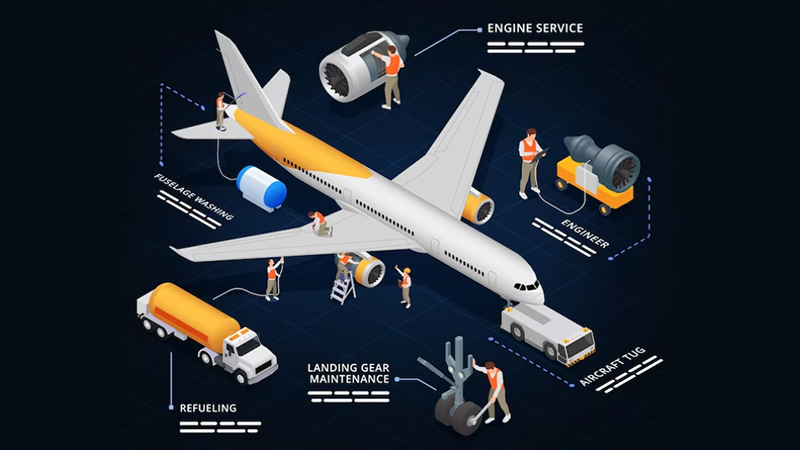While newer aircraft continue to enter service with improved capabilities and efficiencies, there has been a marked slowing of the retirement of older aircraft. This is driven by a combination of market demand and airline operational considerations.
As a result, many aging aircraft remain in service, contributing to the overall aging of the global aviation fleet.
Approved Maintenance Organisations face several key challenges when it comes to maintaining ageing aircraft fleets.
- Structural Integrity: Ageing aircraft may experience structural fatigue, corrosion, and degradation of materials over time. Licensed engineers must conduct thorough inspections to detect and address any structural issues, ensuring the continued airworthiness and safety of the aircraft.
- Component Reliability: As aircraft age, the reliability of components and systems may decline, leading to an increased risk of in-flight failures or malfunctions. Operators must implement proactive maintenance strategies, including component overhaul, replacement, and life extension programs, to mitigate the risk of unexpected failures.
- Obsolescence Management: Ageing aircraft may contain obsolete or hard-to-find components, avionics, and systems that are no longer manufactured or supported by suppliers. Companies must develop effective obsolescence management strategies, including sourcing alternative parts, reverse engineering solutions, or implementing retrofitting initiatives to ensure the continued operational capability of the aircraft.
- Regulatory Compliance: Ageing aircraft fleets may be subject to evolving regulatory requirements and airworthiness directives aimed at addressing safety concerns associated with ageing aircraft. Engineers must stay abreast of regulatory changes and ensure compliance with updated standards and requirements, while implementing necessary modifications and upgrades to maintain airworthiness.
- Maintenance Cost Optimisation: Ageing aircraft fleets often incur higher maintenance costs due to increased maintenance requirements, component replacement, and repair activities. Licensed engineers must develop cost-effective maintenance plans, prioritize maintenance tasks based on risk assessments and criticality, and explore innovative maintenance strategies to optimize operational efficiency and minimize lifecycle costs.
- Training and Skill Retention: Maintaining ageing aircraft requires specialised knowledge and expertise in dealing with unique challenges associated with older aircraft designs, systems, and technologies. Maintenance engineers must undergo continuous training and skill development to stay updated on best practices, emerging technologies, and evolving maintenance techniques specific to ageing aircraft fleets.
- Fleet Planning and Management: Operators of ageing aircraft fleets must develop comprehensive fleet management strategies, including fleet planning, retirement projections, and replacement planning. Licensed engineers play a key role in assessing the airworthiness and operational viability of ageing aircraft, providing technical expertise to support fleet management decisions and ensuring a smooth transition to newer aircraft models.
Addressing these challenges requires a collaborative approach involving licensed engineers, maintenance personnel, operators, regulatory authorities, and industry stakeholders. By implementing proactive maintenance strategies, leveraging advanced technologies, and prioritizing safety and reliability, licensed engineers can effectively manage the complexities associated with maintaining ageing aircraft fleets while ensuring continued safe and efficient operations.
If you would like more information how KDC Resource can support your engineering requirements, please get in touch via the form below.


